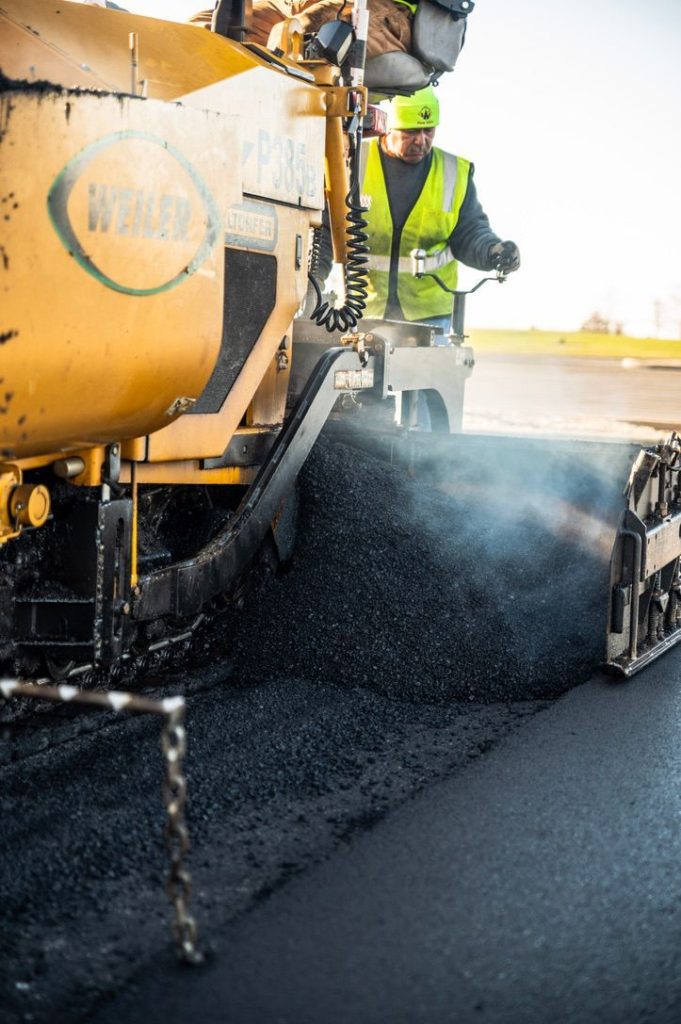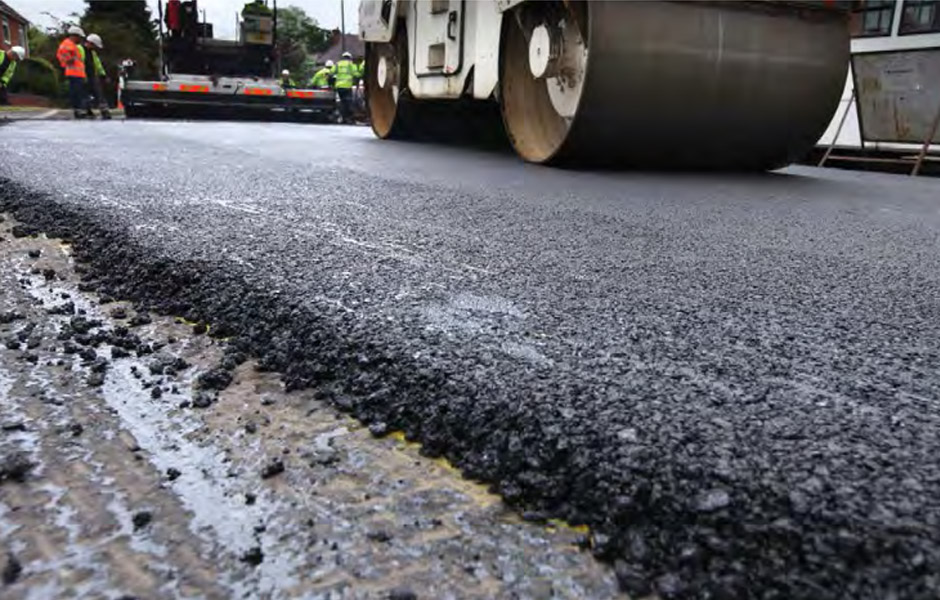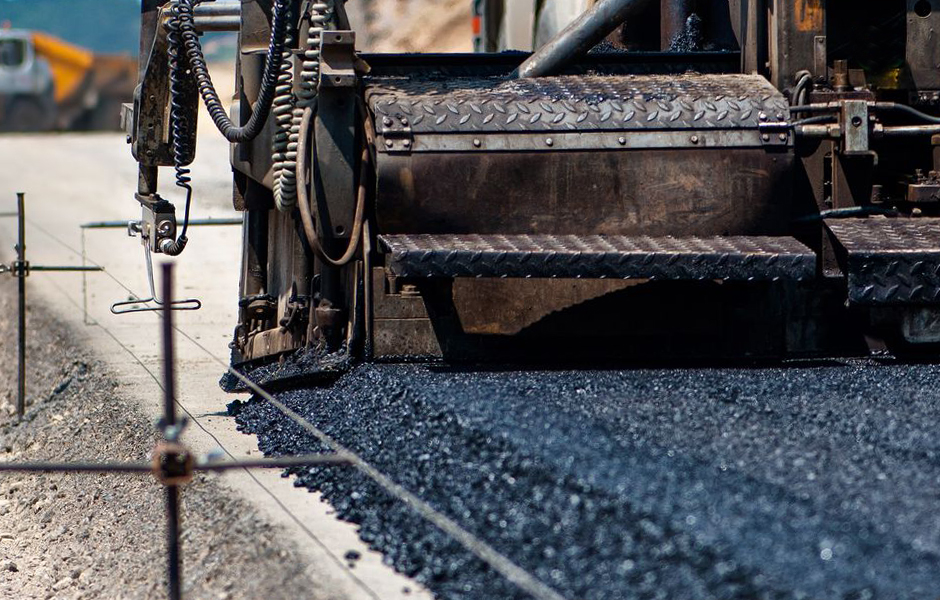Binder Course Asphalt
Binder Course Asphalt - The exact use of bitumen is that these materials can bond the aggregates and make a firm asphalt. Because the binder must be strong, it typically contains aggregates that are approximately 0.75 inch in size. The binder layer is large aggregate mixed with oil, making it very strong and durable. What is a minimum temperature for asphalt mixes? Flexible pavements contain bitumen or asphalt layer as wearing course and supports loads through bearing. How can you tell that a mix is properly mixed? Surface courses are most often constructed out of hma. The purpose of the binder is to make the base stronger and more stable. The layer immediately beneath the surface course. The pavement layers for two common methods, full depth hma and hma over aggregate base, of hma construction are shown in figure 1. Web surface course, intermediate or binder course, and a base course. Physical properties, how asphalt binders behave; Web what does an asphalt paving contractor mean when speaking of the binder course? Ac 20 dense binder 100/150 is normally used between the surface course and the base course and is suitable for footpaths and light traffic areas. Web if you are. Because the binder must be strong, it typically contains aggregates that are approximately 0.75 inch in size. Web a set of nearly 100 asphalt binders including different aging conditions, different levels and types of modification, and recycled asphalt binders and contents were examined using the proposed approach. Binder and surface course once the sub base is laid and any soft. Because the binder must be strong, it typically contains aggregates that are approximately 0.75 inch in size. Web the binder course sits between the surface and the base course where its key function is to distribute load to the base course. Surface courses are most often constructed out of hma. Web if you are responsible for asphalt testing, materials approval,. The results indicate that a ductility parameter obtained using the test is highly repeatable with an average coefficient of variation of 9%. Web asphalt mixtures exhibit complex mechanical behaviors due to their multiphase internal structures. Ac 20 dense binder 100/150 is normally used between the surface course and the base course and is suitable for footpaths and light traffic areas.. Web construction should construction crews be allowed to pave in the rain? They have low flexural strength. Technician’s manual for specification testing of asphalt binders, the written exam and the laboratory proficiency exam. Web if you are responsible for asphalt testing, materials approval, specification and quality control, this course is for you. 406.09620108 9.5 f3 top course asphalt with polymer. The binder course is therefore placed between the surface course and base course to reduce rutting by combining qualities of stability and durability. Web this webinar provides a general introduction to asphalt binders, covering the following topics: Web construction should construction crews be allowed to pave in the rain? The purpose of the binder is to make the base stronger. Because the binder must be strong, it typically contains aggregates that are approximately 0.75 inch in size. Flexible pavements contain bitumen or asphalt layer as wearing course and supports loads through bearing. The exact use of bitumen is that these materials can bond the aggregates and make a firm asphalt. The purpose of the binder is to make the base. Web construction should construction crews be allowed to pave in the rain? Web a set of nearly 100 asphalt binders including different aging conditions, different levels and types of modification, and recycled asphalt binders and contents were examined using the proposed approach. Web asphalt mixtures exhibit complex mechanical behaviors due to their multiphase internal structures. Originally, the lb was simply. What is the proper thickness of lift that should be used? The pavement layers for two common methods, full depth hma and hma over aggregate base, of hma construction are shown in figure 1. Originally, the lb was simply a layer to provide a working platform that corrected minor variations in the profile of the pavement before hma overlay. The. The surface, binder, and base courses are typically different in composition and are placed in separate construction operations. Preparation for testing (sampling, heating, and splitting) asphalt binder tests and specifications; Web a set of nearly 100 asphalt binders including different aging conditions, different levels and types of modification, and recycled asphalt binders and contents were examined using the proposed approach.. Web what does an asphalt paving contractor mean when speaking of the binder course? It provides additional load distribution and contributes to drainage. Web the binder course sits between the surface and the base course where its key function is to distribute load to the base course. Web 404.198901 19.0 f9 binder course asphalt, 80 series compaction. Web c) binder course of asphalt: The layer immediately beneath the surface course. Depending on the depth of the aggregate base—every additional 3 inches of aggregate generally means 1 inch less of asphalt—the asphalt is ideally put down in two layers. Ac 20 dense binder 100/150 is normally used between the surface course and the base course and is suitable for footpaths and light traffic areas. The binder layer can be thought of as the strength of any new asphalt surface. The binder course is therefore placed between the surface course and base course to reduce rutting by combining qualities of stability and durability. The performance of lb has become of increasing concern with respect to whether high. Web the asphalt binder, sometimes referred to as the asphalt cement binder or the asphalt cement, is an essential component of asphalt concrete—it is as the name implies the cement that holds the aggregate together. Web asphalt is a mixing of different materials including different types of aggregates, bitumen binder and sometimes different additives that can improve its performance. The pavement layers for two common methods, full depth hma and hma over aggregate base, of hma construction are shown in figure 1. Web this webinar provides a general introduction to asphalt binders, covering the following topics: Binder and surface course once the sub base is laid and any soft areas are identified and repaired, it is time to add the binder.
Typical Layers Of A Flexible Pavement Engineering Discoveries

Anatomy of Asphalt Pavement Eagle Rock

Paving Asphalt Concrete Binder Course. YouTube

Asphalt Concrete Binder Course, HD Png Download 700x491(6227424

Asphalt Paving What is Binder & Topcoat? Chicago Asphalt Paving

AC 20mm Limestone Dense Builder Course Newlay Asphalt

CONSTRUCTION WORK OF ASPHALT WEARING BINDER COURSE IN SEVERAL STREETS

Asphalt Products Newlay Asphalt

asphaltic concrete binder course Brian Solomon

Application of RAP in Asphalt Concrete Pavements Encyclopedia MDPI
The Wearing Course (Top) And Binder Course (Bottom).
Web The Asphalt Binder Content That Satisfies All Of The Cracking, Rutting, And Moisture Damage Criteria Is Finally Identified As The Obc.
The Exact Use Of Bitumen Is That These Materials Can Bond The Aggregates And Make A Firm Asphalt.
Because The Binder Must Be Strong, It Typically Contains Aggregates That Are Approximately 0.75 Inch In Size.
Related Post: